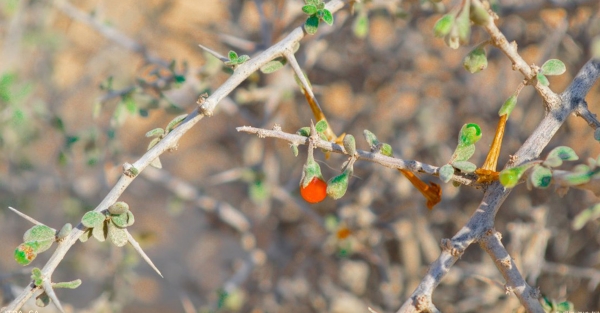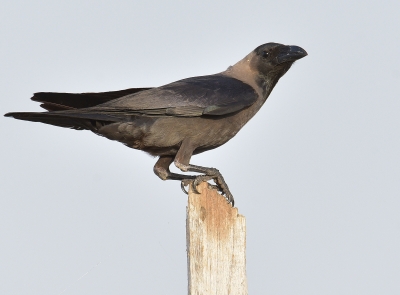
The Lycium Shawii Shrub, Desert Torn, or Arabian boxthorn (Lycium shawii, Solanaceae) is a shrub of the Solanaceae species. It is endemic to southwestern Africa, the Mediterranean basin, and subtropical lands. It is known for its presence across the Arabian Peninsula. It is one of the cultivated desert plants in Riyadh City, in the Kingdom of Saudi Arabia.
The lycium shawii shrub is resilient in urban and dry environments. It is sensitive to waterlogged conditions. It can survive without irrigation and can withstand high salinity levels estimated at five thousand parts per million. It also has a frost tolerance down to minus nine degrees Celsius.
Characteristics of the lycium shawii shrub
The lycium shawii shrub grows up to a height of four m. Its branches spread, covering up to six m. It bears several branches, small thorns, small dark green leaves, star-shaped white flowers that blossom in spring with a diameter of around seven mm, and red pulpy fruits the size of a pea. These shrubs attract birds and bees. The desert shrub can adapt to desert conditions. It can withstand drought, frost, wind, grazing, and high temperatures.
Cultivation of the lycium shawii shrub
The lycium shawii shrub propagates upon cultivating seeds or rooting stem cuttings. Its nutritional needs are rather limited. It grows in clay and rocky soils and can withstand salinity. It can survive without irrigation once its roots and stems grow. Its growth is supported by heavy pruning.
The lycium shawii shrub grows in semi-arid to very arid environments and requires minor care. Desert shrubs are suitable for afforestation in open areas, hillside gardening, slope stabilization, and environmental enhancement. These plants can be used to form a hedge or windbreakers. They also provide livestock with a food source.
Related quizzes
Related articles


